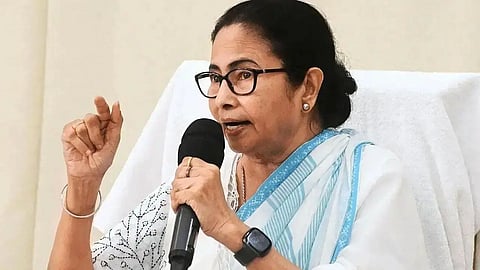
- Home
- Live Blog
- Breaking News
- Top Headlines
- Cities
- NE News
- Sentinel Media
- Sports
- Education
- Jobs

West Bengal Chief Minister and Trinamool Congress Party supremo Mamata Banerjee has shown unnecessary concern over the latest eviction drives carried out by the Government of Assam to reclaim large tracts of forest and government land that have been under illegal occupation for years. Two conclusions can be drawn from Banerjee’s unsolicited remarks. One, Banerjee is totally ignorant about how immigrants and infiltrators from erstwhile East Bengal/Pakistan and present-day Bangladesh have been systematically occupying various categories of land—reserved forests, national parks, wetlands, land belonging to various educational and religious institutions, and land reserved for tribal communities—in Assam. And two, she stands in favour of those hordes of “land-hungry” immigrant peasants from East Bengal, the overwhelming majority of whom are Muslims, who started coming from 1906 onwards at the instigation of the Muslim League, which was born in Dhaka in that year, as part of the latter’s conspiracy to change the demography of Assam and make Assam part of a larger Muslim country. While population movement went on during the colonial era, there were two big flushes in the post-independence era, one in the immediate period of Partition and the creation of East Pakistan, and the other in the period (1969-71) when East Pakistan witnessed a civil war resulting in the birth of Bangladesh. The Supreme Court is on record saying that there was a large-scale influx of persons from the then East Pakistan into India before the commencement of the December 1971 Indo-Pak war. Considering the pro-immigrant stand of the Congress party, it can be easily construed that the then governments, the central government headed by Indira Gandhi and the Assam government headed by Sarat Chandra Sinha, had deliberately turned a blind eye to the influx issue and did not take any action to send back the refugees after their country was liberated. The demography in several districts of Assam—Dhubri, Goalpara, Barpeta, Morigaon, Nagaon, and Darrang—has already changed in a dangerously irreversible way. The Supreme Court, in its verdict of July 12, 2005, striking down the notorious IM(DT) Act of 1983, had also placed on record certain very important points. It had recorded that “the dangerous consequences of large-scale illegal migration from Bangladesh, both for the people of Assam and more for the nation as a whole, need to be emphatically stressed. No misconceived and mistaken notions of secularism should be allowed to come in the way of doing so.” Analysing large-scale population movement from Bangladesh, the Supreme Court had also placed on record that “the spectre looms large of the indigenous people of Assam being reduced to a minority in their home state. Their cultural survival will be in jeopardy, their political control will be weakened, and their employment opportunities will be undermined.” Most important is the description by the Supreme Court of India that this influx is a “silent and invidious demographic invasion of Assam.” To quote the Supreme Court order ad verbatim, “The silent and invidious demographic invasion of Assam may result in the loss of the geo-strategically vital districts of lower Assam. The influx of these illegal migrants is turning these districts into a Muslim majority region. It will then only be a matter of time before a demand for their merger with Bangladesh may be made. The rapid growth of international Islamic fundamentalism may provide the driving force for this demand. In this context, it is pertinent that Bangladesh has long discarded secularism and has chosen to become an Islamic state. Loss of lower Assam will sever the entire landmass of the Northeastfrom the rest of India, and the rich natural resources of that region will be lost to the nation.” That the problem of systematic occupation of land by these elements is gigantic can be gauged from the fact that relentless efforts by the present BJP-led government have freed about 119,548 bighas (approximately 160 sq km) of land from the grip of encroachers in the last four years. As stated by Chief Minister Dr. Himanta Biswa Sarma recently, the land cleared of encroachment includes 84,743 bighas of protected forest land, 3,643 bighas of PGR and VGR land, 26,713 bighas of khas land, and 4,449 bighas of other lands like those belonging to xatra and other religious and indigenous institutions. This, incidentally, is only a small portion; the Chief Minister has stated that around 63 lakh bighas of land are still under encroachment, of which about 29 lakh bighas are forest land. The action of the present government headed by Dr. Sarma must be one hundred percent appreciated because, as the Supreme Court had said in its above-mentioned order, “the influx of Bangladeshi nationals who have illegally migrated into Assam poses a threat to the integrity and security of the northeastern region.”